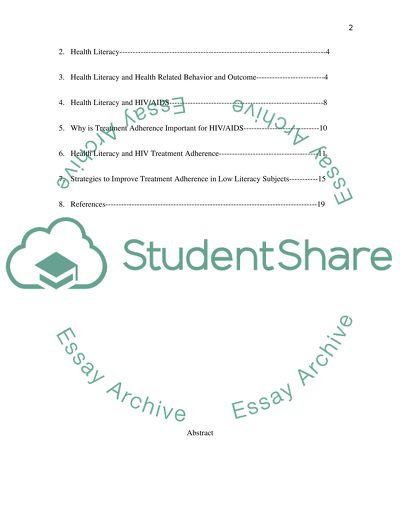Cite this document
(“Literature Review of Health Literacy and HIV Treatment Adherence Thesis”, n.d.)
Retrieved from https://studentshare.org/finance-accounting/1417104-literature-review-of-health-literacy-and-hiv
Retrieved from https://studentshare.org/finance-accounting/1417104-literature-review-of-health-literacy-and-hiv
(Literature Review of Health Literacy and HIV Treatment Adherence Thesis)
https://studentshare.org/finance-accounting/1417104-literature-review-of-health-literacy-and-hiv.
https://studentshare.org/finance-accounting/1417104-literature-review-of-health-literacy-and-hiv.
“Literature Review of Health Literacy and HIV Treatment Adherence Thesis”, n.d. https://studentshare.org/finance-accounting/1417104-literature-review-of-health-literacy-and-hiv.


